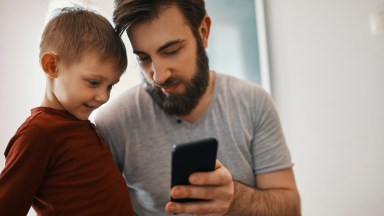Nike is not an official World Cup sponsor but, thanks to some creative marketing, that doesn’t stop consumers across the globe from linking the company to the world’s largest soccer tournament. The Nielsen Company analyzed online blogs, message boards and social networking sites and found that the sports shoe and apparel giant was more frequently linked to the World Cup than any of the tournament’s official partners and sponsors.
The study revealed that, over the last month, there were twice as many references to Nike in online English-language messages related to the World Cup than for its biggest competitor and official World Cup partner, adidas – who had the highest levels of tournament mentions of any of the official brands.
Nine of the 32 teams participating will be wearing Nike kits including the US and Australia, compared to 12 for adidas. However, much of Nike’s buzz activity was driven by its global “Write the Future” campaign which featured many of the biggest stars who will be on show in South Africa including Wayne Rooney and Cristiano Ronaldo as well as other famous stars such as Kobe Bryant, Roger Federer and even Homer Simpson.
The full-length video has enjoyed almost 14 million views on YouTube since the middle of May. Not to be outdone, adidas produced its own Star Wars-themed World Cup video featuring David Beckham, that’s drawn over 2 million viewers since its release just last week.
HIGHEST SHARE OF ONLINE WORLD CUP BUZZ
(Sponsors vs. Competitors)
| Rank | Brand | Type | % Share of Official and Competitor Buzz* |
|---|---|---|---|
| 1 | Nike | Non-affiliated Competitor | 30.2% |
| 2 | adidas | FIFA Partner | 14.4% |
| 3 | Coca-Cola | FIFA Partner | 11.8% |
| 4 | Sony | FIFA Partner | 11.7% |
| 5 | Visa | FIFA Partner | 7.3% |
| 6 | Carlsberg | Non-affiliated Competitor | 3.9% |
| 7 | McDonald’s | FIFA World Cup™ Sponsor | 2.8% |
| 8 | Pepsi | Non-affiliated Competitor | 2.5% |
| 9 | Hyundai/Kia | FIFA Partner | 2.4% |
| 10 | Panasonic | Non-affiliated Competitor | 1.9% |
| Source: The Nielsen Company *Share of online buzz across the 10 sponsors/partners with a global footprint and two of their major competitors in English language messages related to the World Cup from May 7– June 62010 |
Nike wasn’t the only brand to successfully “ambush” a World Cup sponsor or partner. Carlsberg, a sponsor of the England national team, had almost four times the level of mentions in English-language messages around the tournament than Budweiser, the official beer sponsor. This was partly due to Carlsberg’s star-studded ‘legends’ World Cup ad, launched in early May to promote its England association. Rock band Kasabian, adventurer Sir Ranulph Fiennes, Olympic rower Sir Steve Redgrave and athlete Dame Kelly Holmes combine to deliver “probably the best team talk in the world.”
Following Nike, the “ambush” brands most associated with the tournament were Carlsberg, Pepsi and Panasonic.
“If you’re a company with a large global footprint, it’s natural to want to associate yourself with a major worldwide event like the World Cup,” said Pete Blackshaw, executive vice president of digital strategy at The Nielsen Company. “This study shows that compelling, savvy marketing can establish this sort of connection in the eyes of consumers without having to write that expensive sponsorship check.”
For most of the sponsors, though, their official relationship with the tournament has successfully resulted in higher associations with the World Cup than their competitors:
- FIFA partner Coca-Cola had five times the level of association with the World Cup than Pepsi – despite the latter’s ‘Oh Africa’ ad featuring World Cup stars such as Lionel Messi, Thierry Henry and Kaká which has generated over a million views online
- Triggered by Twitter retweets in early June to its FIFA YouTube page and its campaign to create the longest “goal” shout, Visa had 15 times the World Cup association than MasterCard
- FIFA partner Sony is timing the launch of its 3D TV sets with the opening day of the tournament, helping to drive association levels seven times higher than Panasonic and ten times higher than Philips
Nielsen’s study, conducted between May 7th to June 6th 2010, looked at English language World Cup-related messages on blogs, message boards, groups, video and image sites – including Flickr, YouTube, Facebook, and Twitter – that mentioned at least one of the 10 official FIFA partners and sponsors with a global footprint or two of their top competitors (30 brands in all).



